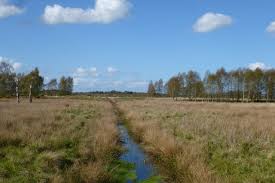Exploring Strensall Common: A Natural Gem in York

Introduction to Strensall Common
Strensall Common is a significant area of natural beauty located on the outskirts of York, England. Covering approximately 500 hectares, this Site of Special Scientific Interest (SSSI) is crucial for both wildlife conservation and public recreation. With increasing urbanisation and environmental degradation, places like Strensall Common serve as essential green spaces, providing a haven for various species and a peaceful retreat for local residents and visitors alike.
Wildlife and Ecological Importance
The ecological significance of Strensall Common cannot be overstated. The common is home to a rich variety of wildlife, including rare species such as the nightjar and the woodlark. The mixture of heathland, wetlands, and grassy areas supports diverse flora and fauna, making it an important site for biodiversity. In recent ecological surveys, over 200 species of flowering plants have been identified, alongside a plethora of insects and bird species that thrive in this unique habitat.
Recent Developments and Events
In recent news, local conservation groups have ramped up efforts to maintain and restore habitats within Strensall Common. Initiatives have been put into place to manage invasive species and enhance the natural environment. Events such as guided walks and educational workshops have also been organised to raise awareness about the area’s ecological significance and engage the community in its preservation. The Yorkshire Wildlife Trust has been active in this initiative, promoting not only conservation efforts but also community involvement in preserving the common.
Community Engagement and Health Benefits
Strensall Common provides an essential recreational space for the local community. It offers numerous walking and cycling trails, attracting both residents and visitors seeking outdoor activities. The mental health benefits associated with spending time in nature are well documented, making Strensall Common a vital space for well-being, especially in the wake of the COVID-19 pandemic. As people increasingly prioritise mental health, nature reserves like Strensall are likely to see an uptick in visitors appreciating their recreational and restorative qualities.
Conclusion
As urban landscapes continue to expand, green spaces like Strensall Common become more vital than ever. They not only protect biodiversity but also enhance the quality of life for residents by providing spaces for leisure and relaxation. Looking forward, ongoing conservation efforts will be essential in preserving Strensall Common’s unique ecology, ensuring it remains a treasured natural resource for future generations. The continued community engagement and awareness about its importance bode well for the future of this natural gem.






